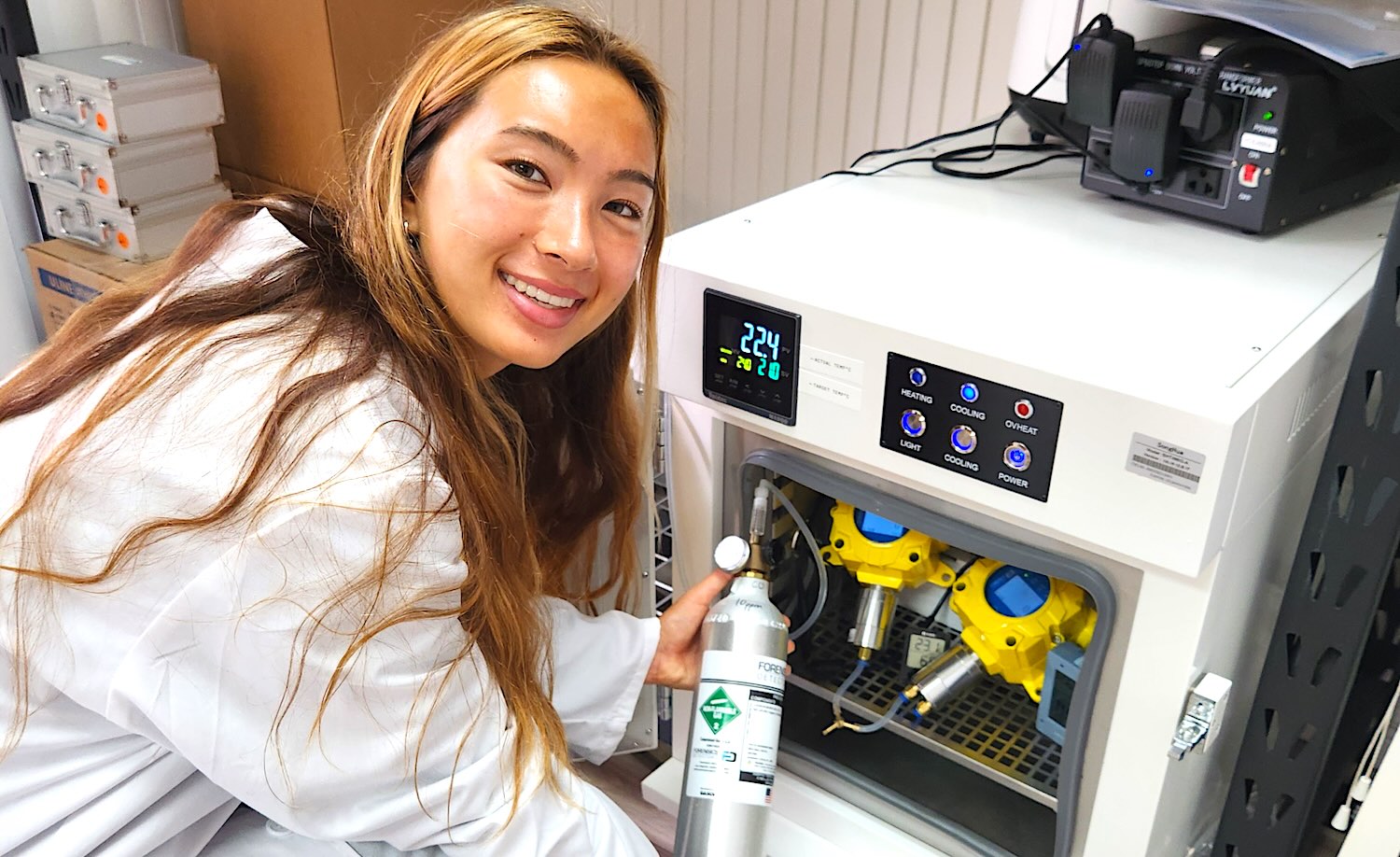By Karissa Galatsis
Electrochemical gas sensors are essential tools for detecting oxygen (O₂) and carbon monoxide (CO) in safety, industrial, and environmental monitoring applications. While highly sensitive and selective, their readings can be influenced by environmental factors—particularly temperature. In this study, we systematically evaluated the temperature-dependent error of multiple Forensics Detectors models across a range from 0°C to 50°C using a controlled environmental chamber.
| Pros | Cons |
|---|---|
| ✅ Identifies temperature sensitivity. | ⛔ All sensors are temperature dependent. |
| ✅ Wide temperature range tested, simulating real-world extremes. | ⛔ Temperature errors do exacerbate inherent errors. |
| ✅ Comparison across multiple Forensics Detectors models. | ⛔ Temperature exposure limited to 45 minutes. |
| ✅ Data useful for extreme temperature operation. | ⛔ Potential cross-sensitivity may also be influenced by temperature. This was not investigated. |
1. Aim
To investigate electrochemical gas sensor temperature errors of oxygen and carbon monoxide detectors.
2. Method
I employed an environmental chamber to test oxygen and carbon monoxide detectors. The testing included sweeping temperatures from 0 to 50°C. We tested Forensics Detectors oxygen models FD-103-O2, FD-600-O2, FD-90A-O2, FD-60-O2, FD-600M-O2 and carbon monoxide models FD-103-CO-LOW, FD-90A-CO, FD-600-CO, FD-600M-CO, FD-60-CO.
The procedure involved first testing the units to room temperature. Next, setting the environmental chamber to 50°C for 45 minutes, then exposing it to the gas for 1 minute and taking a reading. After, the chamber was set to 0°C for another 45 minutes. Then the the detector was exposed to the gas for 1 minute and another measurement was taken. Data was recorded and analyzed as shown in the next section.
 For each test, two detectors were used along with two temperature and two humidity monitors, the average values were used in analysis.
For each test, two detectors were used along with two temperature and two humidity monitors, the average values were used in analysis.
To compare the gas sensors, we use a error metric with units percentage over degree celsius (%/°C). This is the figure of merit we will use in this study to quantify the temperature stressing of gas sensors; it is a well accepted industry metric. The percent error is the full scale maximum range of each detector.
3. Results
3.1 Carbon Monoxide Super-Meter (FD-103-CO-LOW)

3.2 Carbon Monoxide Meter (FD-90A-CO)

3.3 Carbon Monoxide Analyzer (FD-600-CO)

3.4 Carbon Monoxide Data Logger (FD-600M-CO)

3.5 Carbon Monoxide Wall Monitor (FD-60-CO)

3.6 Oxygen Detector Waterproof (FD-103-O2)

3.7 Oxygen Headspace Analyzer (FD-600-O2)

3.8 Oxygen Detector (FD-90A-O2)

3.9 Oxygen Wall Detector (FD-60-O2)

3.10 Oxygen Data Logger (FD-600M-O2)
4. Discussion
4.1 Carbon Monoxide Sensors
The CO detector results showed that temperature drift varies depending on model design:
| Sensor Model | Temperature Error (%/°C) |
|---|---|
| FD-103-CO-LOW | 0.05 |
| FD-90A-CO | 0.02 |
| FD-600-CO | 0.07 |
| FD-600M-CO | 0.07 |
| FD-60-CO | 0.11 |
4.2 Oxygen Sensors
The O₂ detectors performed consistently well, summary is below:
| Sensor Model | Temperature Error (%/°C) |
| FD-103-O2 | 0.03 |
| FD-600-O2 | 0.006 |
| FD-90A-O2 | 0.0087 |
| FD-60-O2 | 0.02 |
| FD-600M-O2 |
0.01 |
4.3 Why Temperature Affects Electrochemical Sensors?

Temperature can influence electrochemical sensors through:
- Reaction Rate Changes – Higher temperatures speed up the electrochemical reactions, increasing sensor output.
- Gas Diffusion Variability – Higher temperatures increases gas diffusion rates to the sensing electrode, also increasing sensor output.
- Electrolyte Property Shifts – Viscosity and conductivity of the electrolyte can change, altering signal stability.
- Thermal Expansion - General thermal expansion and contraction effects of the materials used to build the electrochemical sensor would contribute to temperature variability.
- Electronics - Electronics that undertake signal condition and amplification of the sensor signal is also affected by temperature variability.
4.4 Practical Recommendations
It is important for an end user to understand the influence of temperature of their respective gas detector. We have seen that lower temperatures effect sensors by reducing their output and higher temperatures increase the sensing signal. This also impacts calibration. The following is recommend:
-
Calibrate at expected operating temperatures to help ensure readings are as accurate as possible in real-world use.
-
It is also important to understand your accuracy needs in your respective applications, as a drift of 1% per °C may be negligible in some safety monitoring cases but unacceptable in precision measurement scenarios.
5. Conclusion
Our tests confirm that temperature errors occur in both oxygen and carbon monoxide gas detectors. Knowing the operating environment is imperative in predicting the performance of a gas detector. A gas detector does not perform the same at room temperature as it does at extreme temperatures; errors are induced due to temperature changes. This was observed in our experiments and the data we obtained is in line with gas sensor data sheets. Therefore, it is vital for the end user to be aware of these temperature-dependent errors. Gas detectors are often used as a life-saving device, so important temperature-dependent effects must be known to the user in such applications.
About The Author
Karissa Galatsis is a summer intern (2025) at FORENSICS DETECTORS, where the company operates from the scenic Palos Verdes Peninsula in Los Angeles, California. She has a strong interest in environmental monitoring and sensor technology. During her internship, Karissa has focused on hands-on testing of gas detection equipment, data analysis, and understanding how environmental factors influence gas sensor performance.



